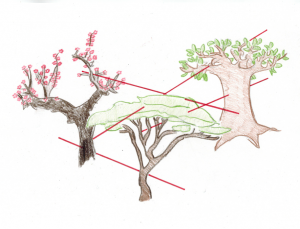Ahmadou Kourouma’s The Suns of Independence provides a window into which viewers can peer into to better elucidate the relationship between religion and culture. In The Suns of Independence, culture and religion often intertwine, sometimes clashing. For example, at one point in the story, the narrator of the novel asks, “Are they [the Malinke] fetish-worshippers or Muslims?” (72). The narrator proceeds, answer his own question by pointing out the paradox that “A Muslim heeds the Koran, a fetish-worshipper follows the Koma; but in Togobala, everyone publicly proclaims himself a devout Muslim, but everyone privately fears the fetish” (72). The Suns of Independence really allowed me to see how different cultures can affect the interpretation of what Islam truly is and, more importantly, that many different cultures can house Islam within their societies. For example, an interesting point brought up during class discussion was the simple fact that Islam is a widespread, global culture. Although China, for instance, is usually considered to be a Buddhist/ Confucian/ Daoist/etc. country, Islam is actually also incredibly present in China. For example, the pegoda-like mosques, and the Han Kitab ( 漢克塔布), are manifestations of how culture can change the interpretation of a religion. My art piece primarily focuses on three cultures, each represented by a tree. The cherry blossom tree, a traditional Chinese art symbol, represents China, the tree in the center represents Africa, and the tree on the right, apparently a famous tree in Yemen, represents the Middle East. There are obviously many more countries that house Islam (the US being a major one) but I have not included them simply for aesthetic artistic purposes and a lack of space. I chose to work with trees because I understand the importance of the idea of the “garden” and of “nature” in Islamic works. The red line connecting all of the trees together represents Islam and its ability to connect different cultures together by uniting people under one faith. The red lines, or Islam, actually pierce through the different trees because Islam, too, pierces and intersects with each culture and interacts with each culture dynamically. I chose the color red because it represents the impactful and bold effect of Islam and the red line on these different cultures. Moreover, there is an old Chinese folklore about the idea of the red line or the “red string of fate” that supposedly binds lovers together. I know from previous readings about Islam (primarily the first readings from session one) (Esack, Farid. The Qur’an: A Short Introduction) that there is a great deal of love (almost bordering on romantic/ amorous) that goes into a Muslim’s attitude and feeling towards Islam

Recent Comments